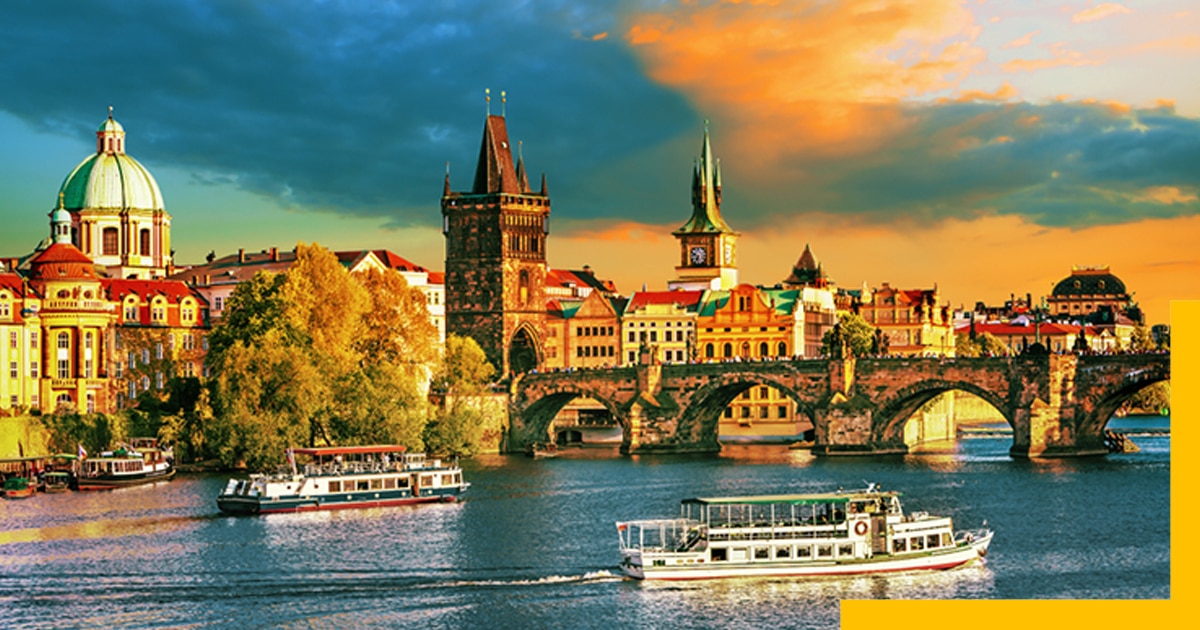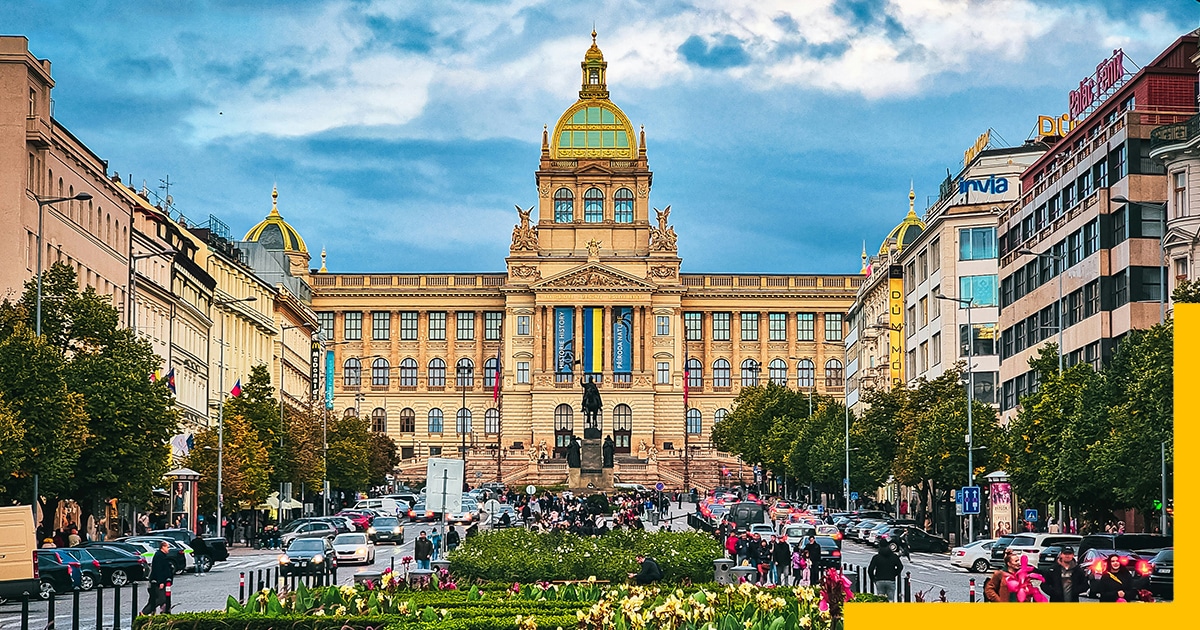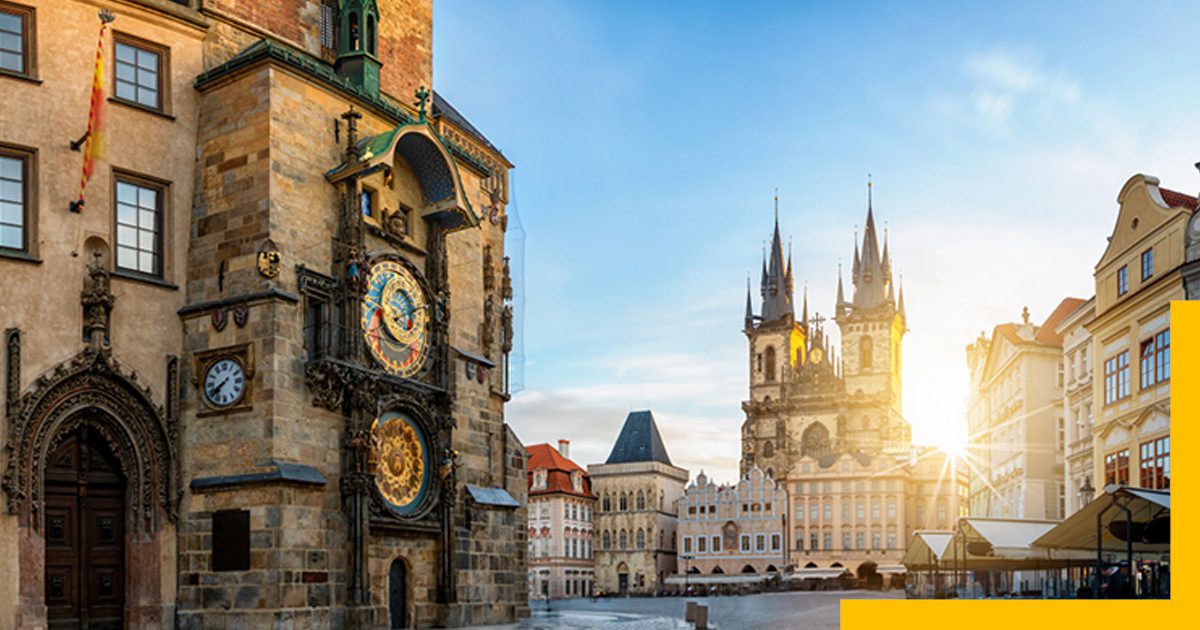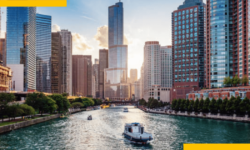Prague Never Lets You Go!
Contents
- 1 Prague: A City of Beauty and History
- 2 Old Town Square and the Astronomical Clock
- 3 Jan Hus Memorial in the Old Town Square
- 4 The Captivating Charles Bridge
- 5 Prague Castle and St. Vitus Cathedral
- 6 Exploring Kafka’s Prague
- 7 Golden Lane and Kafka Bookshop
- 8 Wenceslas Square and the Velvet Revolution
- 9 Petřín Hill and the Quirky Jara Cimrman Museum
Prague: A City of Beauty and History
Embracing Prague’s Charm
In the heart of Europe lies a city that embraces you. As Kafka once described it, Prague never lets you go… this dear little mother has sharp claws— a sentiment that encapsulates the complex dance between the writer and his beloved hometown.

Yet, for me, there’s no ambivalence in my feelings for Kafka. I am unabashedly in love with this man who can make me burst into laughter, shed tears, and send shivers down my spine with his words. It was for him that I set out on this journey, but Prague, with its sweet allure and exquisite charm, ensnared me from the very first moment.
RELATED: Where Napoleon met his Waterloo
The Allure of a Fairy-Tale City
Prague, the capital and the largest city of the Czech Republic is undeniably one of the most beautiful cities in the world. This is one of the few historic cities that have preserved their initial prototype until now. While wandering around Prague, I kept thinking that this was the most suitable city to shoot a movie set in the medieval ages.
Prague, the city of fairy-tale bridges and castle dreams, is a breeze for tourists to explore. All you need is a trusty guidebook. So, I got myself a guidebook, or at least I thought I did. Turns out, I accidentally picked up one written by an American author who seemed more interested in dissing the commies than spilling the tea on Prague’s hidden gems. Lesson learned: Don’t trust a guidebook from an American author when it comes to places with a communist past!
Old Town Square and the Astronomical Clock
The Perfect Starting Point
The perfect starting point for your Prague adventure is none other than the Old Town Square. Here, the show’s star is the Astronomical Clock, a remarkable timepiece dating back to the 15th century. As the hour approaches, you’ll find a bustling crowd of tourists gazing up in anticipation. Yet, this clock is more than a mere timekeeper; it’s a celestial dance, tracing the imagined orbits of the sun and moon around our Earth. Ironically, deciphering the time from this intricate marvel proves challenging.
Flanking the clock are symbolic statues that tell their own stories. A cheerful Turk strumming a mandolin embodies hedonism, while a shrewd Jewish money-lender clutches a bag of gold, representing greed. Then, there’s a figure with a mirror, the very essence of vanity. Overseeing them all, a skeletal figure grips an hourglass, a poignant reminder of the relentless march of time. When the bell tolls, windows spring open, and a captivating performance ensues. Mechanical apostles, the skeletal figure, and even a few “sinners” join in a mesmerizing dance, a truly unforgettable spectacle.
Legends Surrounding the Clockmaker
Legend has it that the clockmaker paid a heavy price for his masterpiece: he was blinded by town officials, ensuring he could never replicate this wonder. In an act of poetic justice, the sightless craftsman scaled the tower and silenced the clock, a silent protest that lasted for over half a century. Of course, historians might have a different take, which is not really interesting, so let’s skip it.
Jan Hus Memorial in the Old Town Square
Jan Hus: An Influential Figure
In the center of the old town square is a Jan Hus memorial. Jan Hus is one of the most influential figures in Czech history; he was burned alive in 1415 after being denounced as a heretic. He laid the foundations of the Hussite church, condemned the corruption of the Catholic Church, promoted local religious autonomy, and told people that Catholicism was not the only legitimate way to be Christian.
Of course, according to the church, he deserved to be killed brutally. The teachings of Jan Hus are known to influence Martin Luther, who was more successful in his Reformation movement. Personally, I wouldn’t say I liked the monument. It was ugly and dirty.
The Captivating Charles Bridge
Historical Significance
The most captivating sight in Prague is the Charles Bridge, which dates back to the 13th century. Charles Bridge crosses the Vltava River in Prague. The view of the bridge and from the bridge are both breathtaking. The bridge is decked with sculptures, now primarily replicas of the originals.

The Statue of John of Nepomuk
The most important of statue of the national saint of the Czech Republic, John of Nepomuk. This guy was a 14th-century priest, and the queen confessed all her sins to him. Of course, the king wanted to know all of his wife’s secrets, especially whether she was more treacherous than he was himself. But John of Nepomuk refused to do so, naturally, that infuriated the king, and he asked his people to throw the errant priest into the Vltava River. When Nepomuk touched the waters miraculously, a golden halo appeared over the river; today, there is a ring of golden stars over his head on the statue.
Touching the golden tablet beneath the figure is supposed to bring you good luck and ensure you will soon revisit Prague. A few meters in front of the actual statue on the left parapet of the bridge, there is a small crucifix marking the spot where he was thrown from the bridge. Touch it, and your wish will come true! Though this story is interesting, some historians say it is a made-up tale. They claim that it was fabricated to tone down the impact of the factual Jan Hus account, which was gaining popularity among the masses. That scared the hell out of the Catholic Church, and they had to come up with a fake hero.
Prague Castle and St. Vitus Cathedral
The Enchanting Prague Castle
Prague Castle is the largest ancient castle in the world, with a fairy-tale aura attached to it. It is not a single castle but a series of palaces and ecclesiastical buildings of various architectural styles.
The Magnificence of St. Vitus Cathedral
St. Vitus Cathedral is a magnificent Gothic cathedral located within Prague Castle. It is the largest and most important church in the Czech Republic, serving as a spiritual symbol and a national treasure.
Exploring Kafka’s Prague
“The City of K” Exhibit
It is hard to avoid Kafka in Prague. You will find different houses where he lived, his school, work place, the path he used to take for going to school, and his last resting place. Besides, there is a unique conceptual museum. This museum displays an exhibit called “The City of K.” It shows Kafka-related artifacts, photographs, and documents and a metaphoric manifestation of Kafka’s work and life.
The words, the images, the light, and the sound are used to immerse you into the complex world of Kafka. Kafka once wrote, “we ought to read only the kind of books that wound or stab us.” If he were not Kafka, I would have considered this statement a publicity stunt, as his books do have this effect on me. This exhibit has the same impact. I wanted to stay there as it took me into Kafka’s world, life, work, and sufferings. But at the same time, I wanted to run away from there, taking Kafka with me so that he never had to be in this Kafkaesque world.
Golden Lane and Kafka Bookshop
Some Interesting Sites
Among different houses associated with Kafka, the most interesting one is in the Golden Lane in the Castle Quarter. It now houses a Kafka bookshop. Another writer, the Nobel Prize winner Jaroslav Seifert, also lived near the Golden Lane. Ironically, I never heard of this guy before going there. I went there for Kafka, who did not win a Nobel Prize or even get appreciation during his lifetime.
Wenceslas Square and the Velvet Revolution

The Role of Wenceslas Square
In the new town, you will find Wenceslas Square, where thousands of students gathered in Nov 1989. This congregation eventually led to the fall of communism and the Velvet Revolution. During this demonstration, the leading revolution players were positioned in the balcony of one of these buildings. The best way to identify this building is to locate the Mark and Spencer store. What could be the better way to commemorate the stage of the demonstration that brought Capitalism into the country?
Petřín Hill and the Quirky Jara Cimrman Museum
The Petřín Lookout Tower
Perched in the heart of Prague lies Petřín Hill, crowned by the Petřín Lookout Tower. While whispers of Eiffel Tower inspiration circulate, I must confess: the resemblance ends at its towering stature. The real gem, however, lies in the tower’s basement, home to the quirkiest museum I’ve ever encountered—the Jara Cimrman Museum.
The Fascinating Jara Cimrman Museum
Jara Cimrman, a character conceived by Jiří Šebánek and Zdeněk Svěrák for a radio show, transcended its origins, attaining global acclaim. This fictional polymath of the early 20th century was a playwright, poet, composer, teacher, traveler, philosopher, inventor, mathematician, and sportsman—basically, a Renaissance man without the paperwork.

The Impact of Fictional Heroes
Imagine a mind so ingenious that it conjured the light bulb, the atom bomb, and even the telephone, only to arrive late at the patent office, eternally denied due credit. Instead, he lent a hand to history’s luminaries, influencing their magnum opuses. Take, for instance, Anton Chekov’s renowned play, once titled “Two Sisters” until Cimrman’s astute intervention: “Isn’t that one sister too few?” he mused. The playwright promptly revised his narrative.
The museum is a treasure trove of Cimrman’s nonexistent possessions and his comically ironic inventions. A few years ago, a “Greatest Czech Ever” contest was held, and Cimrman garnered the most votes. Alas, he was disqualified on the grounds of non-existence. The uproar that ensued was a testament to the impact of this fictitious luminary. Perhaps, in the grand scheme of things, it’s wiser to create heroes from the realms of fiction than to give someone a hero status when he is not.



